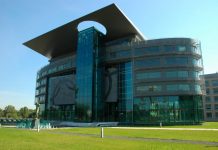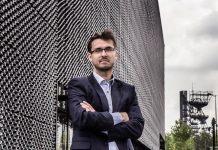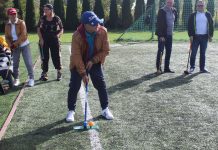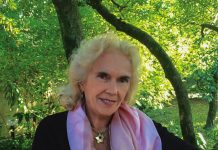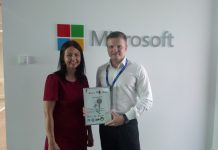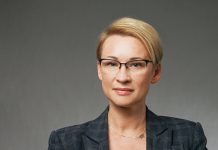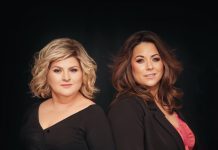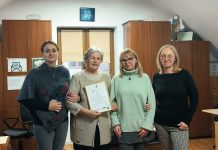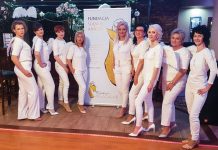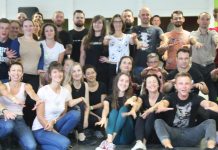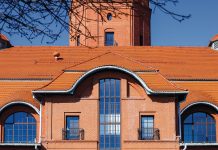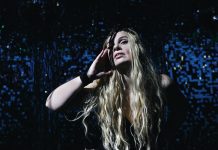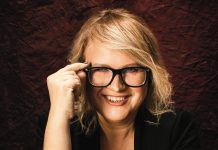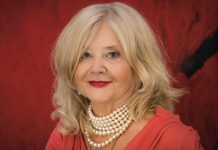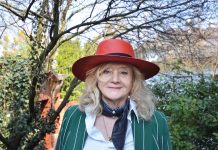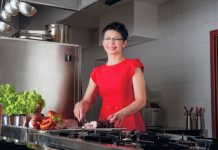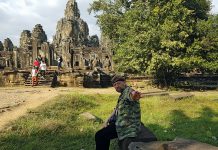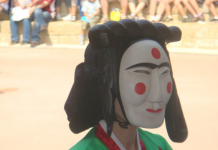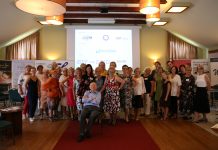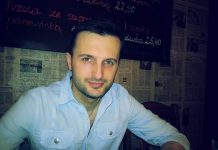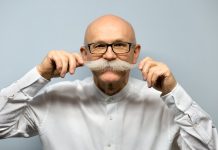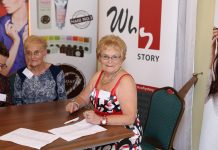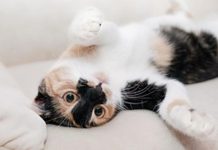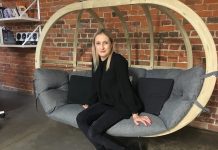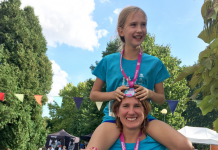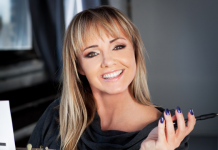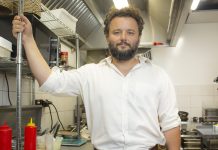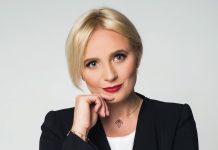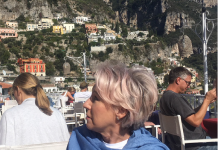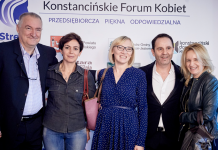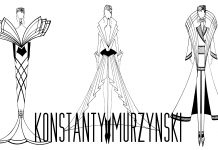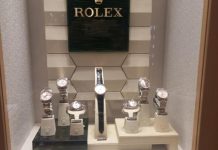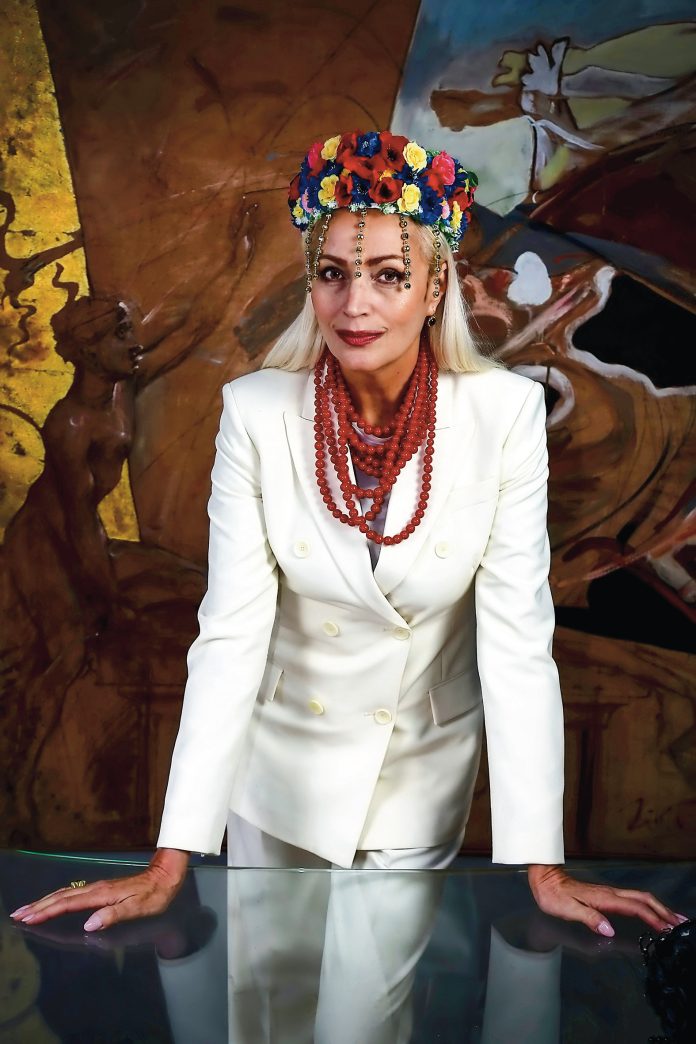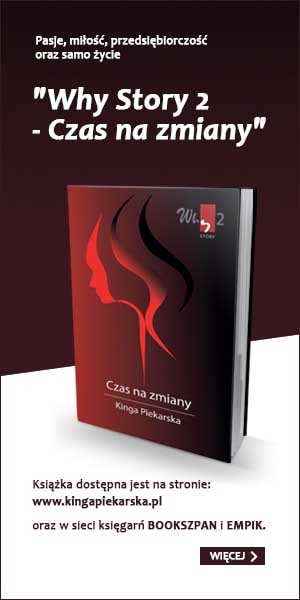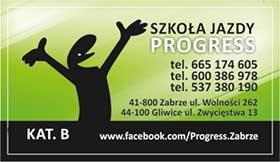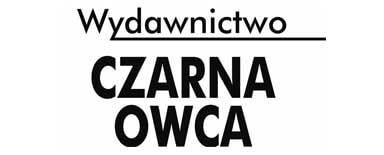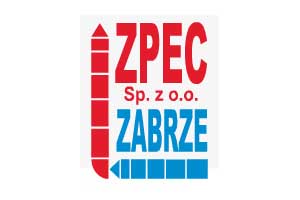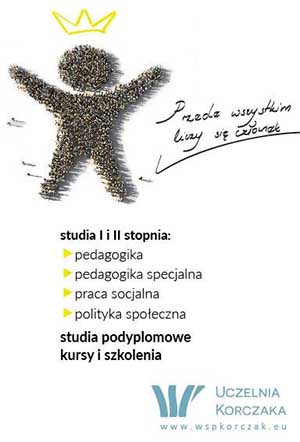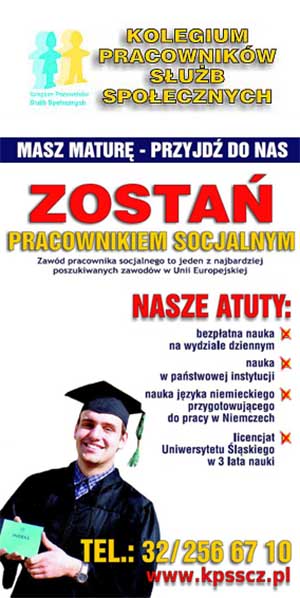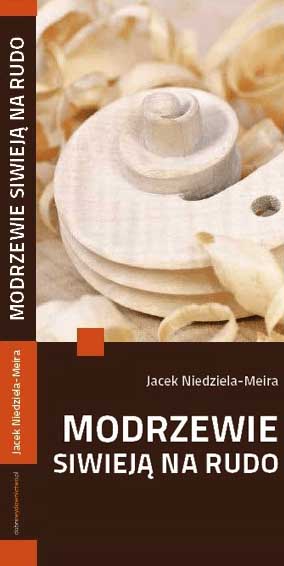We interview Dr Ilona Kanclerz – chairperson of the Silesian Regional Party, intermedia artist, university lecturer, fashion designer, entrepreneur from Katowice, winner of many awards and titles, including Charismatic Woman, Leader by Vocation, nominated for the title of Extraordinary Charismatic Woman. As an independent, open and creative woman, she escapes patterns and cultural clichés. She leads by example and helps others to develop. She believes the success of modern women to be based on education and financial independence. Through her artistic and creative work, she shows how to use the past and history in designing new meaningful Silesian symbols.
You are a versatile woman, but started as a fashion designer. What was your first job?
I’m glad you ask about work. From the very beginning, my creative activities have been inextricably intertwined with the profit ones. My Mother has always been my inspiration. She used to work in a tailor’s shop, where I spent my days following magazines sent from abroad. These were then the only we had access to. I would cut out pictures of fashion and paste them into a notebook, creating collages and completely new combinations. I designed my own clothes; sewing for yourself was a standard at the time. If girls wanted something special, they had to organise the fabric themselves, for example they would dye reusable muslin squares or altered the clothes coming in parcels from Germany. I used to alter my Mum’s dresses. Sometimes linen and silk from Milanówek was available, and my first collection was sewn from these materials. My first artistic commission was to design costumes for the Ireneusz Dudek Orchestra for Rawa Blues.
You graduated with a degree in social communication and journalism from the Higher School of Social Skills in Poznań, in art history from the University of Silesia and got a doctorate degree at the Faculty of New Media Art at the Academy of Fine Arts in Warsaw.
My studies resulted from my interests along with systematization and professionalization of the knowledge I had. The fields of humanities, social communication or image creation are the basis for creating new solutions and directions in both work and social space. My doctoral studies and intermedia activities I learnt about during the PhD program allowed me to touch previously unknown areas and to attain knowledge and skills in various fields. In addition to assignments in painting, sculpture, photography or printmaking studios, I was able to realise new applied intermedia. And now I specialise in the creation of social messages through art. Artistic activities, developed my thinking about the role of culture today. Everything is an influence, each our movement, how we look, what we do…. Through artistic tools it is possible to better influence the society in a positive sense Contemporary art asks questions but also points, emphasises, recommends, and even shouts. Many seek the meaning of humanity in it.


How did your career develop?
Career? I’d rather say a path. I’ve been working since I was 16. I used to transcribe journalistic texts. Quite early, I started earning money as a designer. I made my debut at the Poznań Trade Fair. On the longest catwalk in Poland. The contest jury included: Jerzy Antkowiak, Ksymena Zaniewska, Barbara Hoff, Grażyna Hasse and Jagoda Komorowska. In 1992, I made a knitwear collection called “Every Day” and won a competition to become head of the design department at the “Polo” Knitting Factory in Kalisz. I managed the new design unit. More than 500 people worked there. It was my first and simultaneously last full-time job. Just three years later, I set up my own business. I was one of the first women in Silesia to open an import company. In 1997, I opened my first fashion atelier and soon had four addresses (affiliates). Twice a month, I flew to Rome to order clothes. At the same time, I was designing and selling my own collections. At that time I saw the potential in real estate, which built my financial independence over the years. I saw the potential in renovation, restoration and redevelopment. I bought dilapidated, shabby flats, renovated them, designed the interiors, fitted them out and sold them with great success. In those days, lots of people discovered their inward flair for business, but from today’s perspective I think we had more determination to pursue our goals. I wasn’t even 30 when I bought my first major property: a palace with a 9-hectare historic park in Gwoździany near Lubliniec.
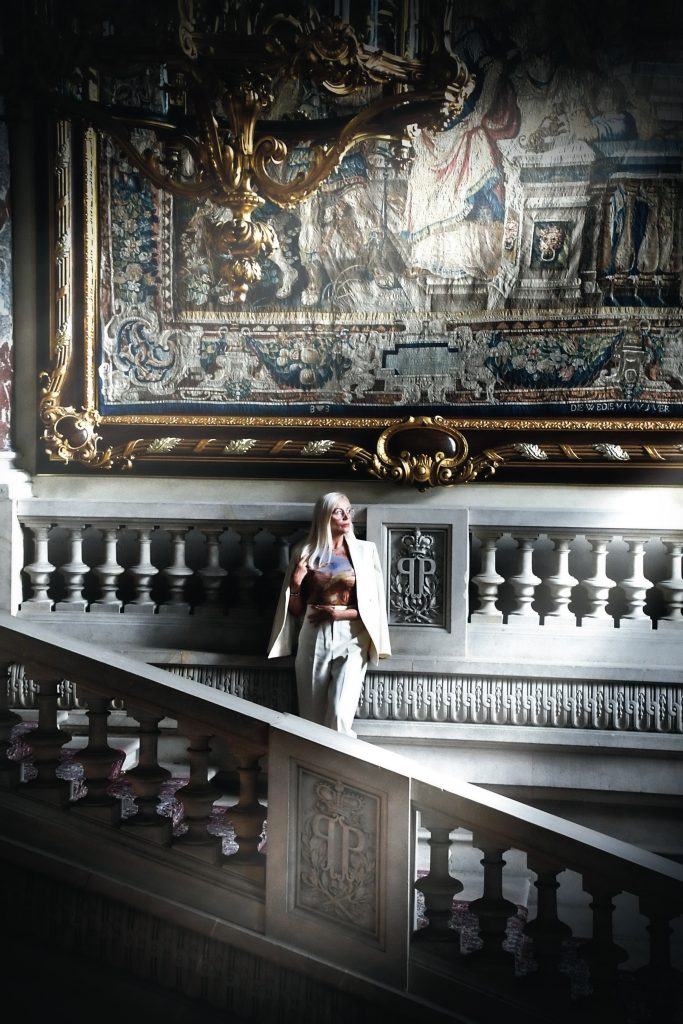
How did you cope with the renovation team?
As well as I could. Over time, it got better and better. Today it’s already the second generation in our company that continues in the real estate business and I have to admit they do it with even better results. My son Sebastian has developed a specialization in historic centres. He manages the entire process of not only design, investment but also sets new trends in the field of renovation and adaptation to modern needs. Whereas, I’m responsible for the so-called difficult subjects, style, details and historical ‘tissue’.
You are known for your love of beautiful interiors. In the Villa Silesia Mariacka 20 Apartments project you created a model space for many other city flats.
It is a burgher house, with a typical turn-of-the-XX-century style of Silesian-German architecture. New eclectic background elements in pragmatic solutions. But here I’m also evolving. I have recently fallen in love with the Louis XVI style, the golden age of Baroque classicism, and I’ve been currently collecting such furniture.
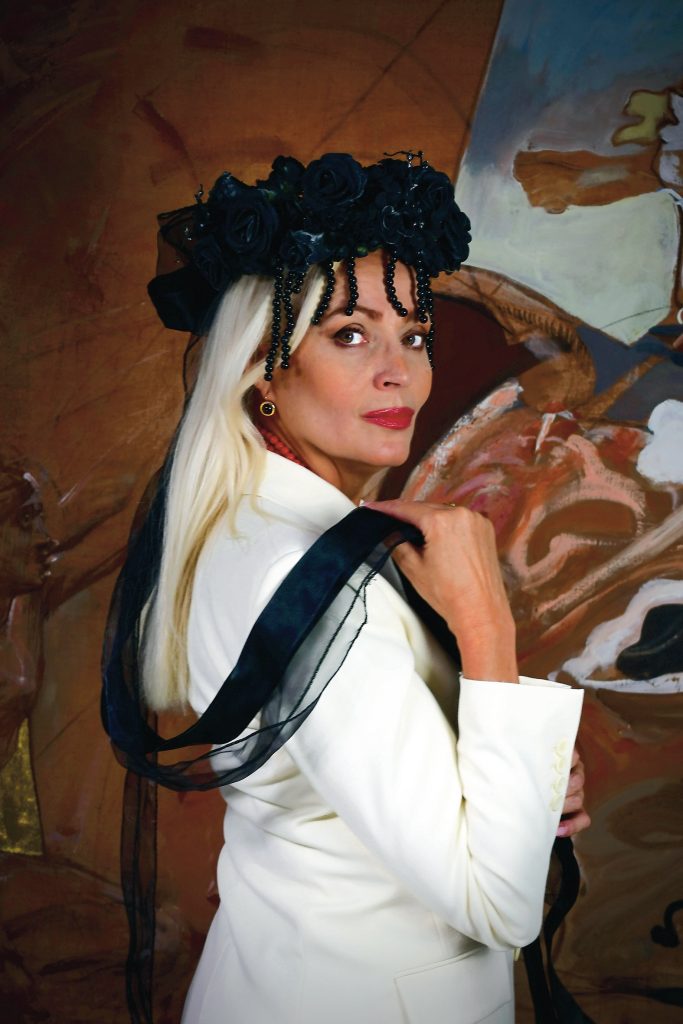
What subject matters prevail during your academic lectures?
Since 1998, I have been giving a series of lectures and author papers in the fields of economics, culture and art. Among others, I have worked at the University of Silesia, the Academy of Silesia, the Cracow School of Art and Fashion Design, the University of Warmia (and Mazury), and Janusz Korczak Pedagogical University. More than 20 years ago, along with the Krakow School of Art and Fashion Design, we noticed the need to introduce economic subjects in artistic faculties. We first introduced the subject: How to be a designer and survive, or economics in fashion. We answered the following questions: what fashion does for a living, how to raise funds, how to put together a budget for a studio, what to buy fixed assets for, how to equip galleries, what taxes, social security, etc. are. Artists and creators often don’t know this.
You are also devoted to social activity. In which areas?
I’m a humanist interested in human relations and what good things they can do in culture, art, society, economy but also politics. It’s worth mentioning some of the projects I have initiated or co-created. In 2006, together with Lidia Popiel, Wiktor Osiatyński and Manuela Gretkowska, we founded the Women’s Party. And in 2018, here in Silesia, I co-founded the Silesian Regional Party. Sentimental returns to the interwar period, which was golden for Silesia, and recalling the speech of the fathers are not enough. Today, we have new challenges. Improving the quality of life of our regional residents, protecting the assets of our culture, art and traditions, a strong economy, regional education and a good position in Europe are all goals and challenges for Silesian organisations. Although our history is complex, it is worth mentioning the independent Silesian treasury, the building of the Silesian Parliament serving as a model for constructors of the Polish Parliament, or the outstanding examples of modernist architecture. Many Nobel Prize winners came from here. We are a culturally diverse region full of opportunities, and our experience may serve all of Poland. For me, Silesia means not only the motherland, but also the starting point of Europeanism.
Once again, we can be in the vanguard of change. In the course of my research and searching for new symbols, I proposed a solution far from the standard. Inspired by Professor Irma Kozina, I developed an extensive use of the fern leaf motif. It is a new idea, yet embedded in history, a symbol of the region. This motif runs through my creative work.
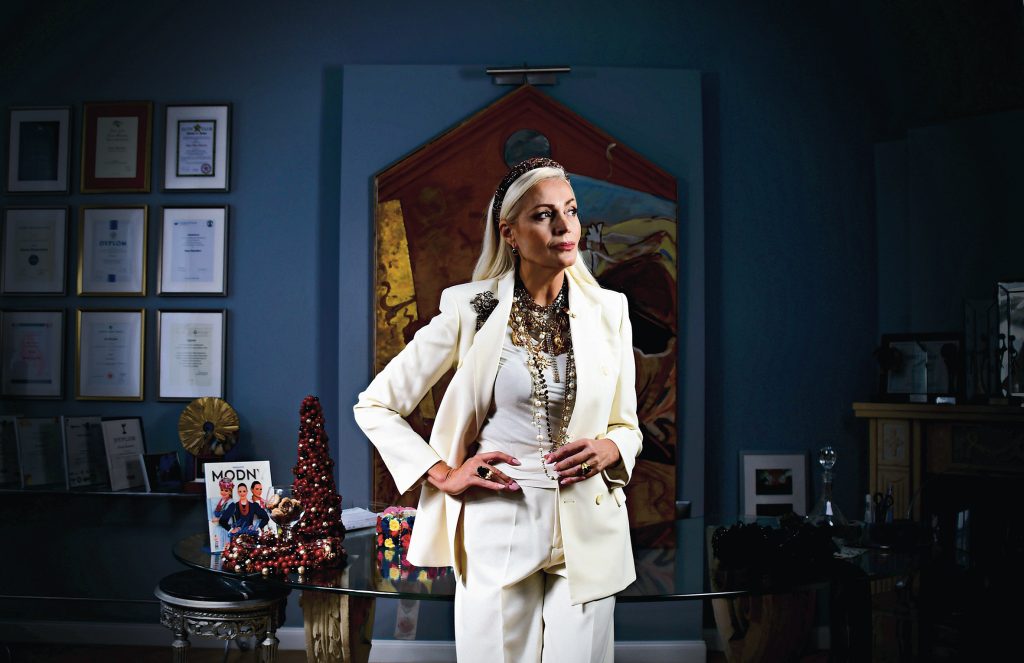
What are you most proud of?
Of my children. They are a better version of me. I’m also proud of their children. They bring us light for the future. I am proud of my long-standing friendships, acquaintances, relationships.
I’m glad about how much has been accomplished in our multigenerational and multicultural activities. Some achievements are worth mentioning.
During my 18 years of cooperation with the Poznan International Fair, where I curated a national exhibition for young artists, I promoted and gave a professional start to more than 300 designers. I meet many of them working in this profession. I have fond memories of more than 20 years of creative relationship with Joanna and Jerzy Gaweł in the Council of High Tailors at the SAPU (International School of Fashion Design) Festival in Krakow. In particular, I cherish the Women of Success of the Polish Regions Awards. More than 25 editions and hundreds of extraordinary female beneficiaries of our action conducted together with the initiator Ewa Domaradzka-Ziarek. I also cannot fail to mention my students and artistic trainees. Some, like Aneta Larysa Knap and her POLKI FOLKI, have already written their own outstanding history.
What are your plans?
Some themes have already started, but it will take several years to complete them. The Modny Śląsk project, which has been running since 2012 as a platform for the promotion of the Silesian region and a field for the search for new symbols, will also be extensively developed. Alongside this, regional sites such as Modna Ruda and Modny Lublin have also been developed. There are also plans to continue the publication of the Modny Śląsk magazine. A new collection inspired by the art and history of Silesia, and the development of a nationwide project to promote regions and their cultural identity CZERWONE KORALE.
How do you relax?
I love looking at beautiful things and surround myself with smart people. Many hours of conversations with inspiring people, philosophical but also realistic discussions based on hard financial principles to design a future, a better one.
Planning and development.
Dorota Kolano
Beata Sekuła




